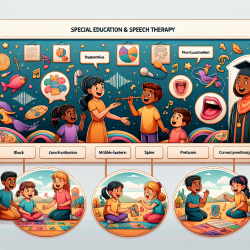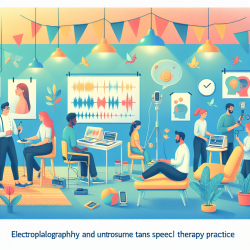As a Special Education Director deeply invested in the advancement of therapeutic practices for students, I constantly seek innovative methods to enhance our educational offerings. One area of critical importance is speech intelligibility in children with hearing impairments. The challenge of ensuring clear and comprehensible speech cannot be understated, as it significantly impacts a child's academic performance, social integration, and overall self-esteem. In this context, the CID Picture S.P.I.N.E. Speech Intelligibility Evaluation emerges as a pivotal tool for practitioners aiming to refine their therapeutic approaches.
The CID Picture S.P.I.N.E. (Speech Production Inventory for Novel and Everyday Speech) Evaluation is designed to assess speech intelligibility in children and adolescents with severe to profound hearing impairments. Developed by experts at the Central Institute for the Deaf, this evaluation tool offers a unique approach by focusing on the intelligibility of speech in the absence of verbal context, using a set of picture cards to prompt spoken responses.
Understanding Speech Intelligibility Challenges
Before delving into the specifics of the CID Picture S.P.I.N.E. Evaluation, it's essential to understand the complexities surrounding speech intelligibility. Speech intelligibility refers to how well a speaker's utterances are understood by a listener. For children with hearing impairments, achieving clear speech can be particularly challenging due to the intricate interplay of phonetic and phonological processes affected by their hearing loss.
The CID Picture S.P.I.N.E. Evaluation: A Closer Look
The CID Picture S.P.I.N.E. Evaluation is comprised of 100 picture cards, organized into sets based on phonetically confusable words. These words were selected for their ease of pictorial representation, relevance to the vocabulary of young hearing-impaired children, and their role in highlighting phonemic contrasts critical to speech intelligibility. The evaluation process is engaging for children, as they name the pictures without the examiner seeing the card, ensuring the assessment focuses purely on speech output.
Benefits for Practitioners
- Insight into Specific Phonemic Contrasts: The evaluation sheds light on specific phonemic contrasts that are pivotal for intelligibility, such as voiced/voiceless distinctions and tongue height. This insight is invaluable for tailoring therapy to address the nuanced needs of each child.
- Quantifiable Progress: By offering a structured assessment framework, the CID Picture S.P.I.N.E. Evaluation allows practitioners to quantitatively measure a child's progress in speech intelligibility, facilitating more targeted and effective intervention strategies.
- Engagement and Motivation: The use of picture cards makes the evaluation process enjoyable for children, which can enhance motivation and cooperation during both assessment and therapy sessions.
Implementing Findings in Therapy
The insights gained from the CID Picture S.P.I.N.E. Evaluation can significantly influence therapeutic practices. Understanding the specific areas of difficulty in a child's speech production enables practitioners to design interventions that focus on the phonemic contrasts and speech sounds most in need of improvement. Additionally, the engaging nature of the evaluation itself can be mirrored in therapy sessions, using visually stimulating materials and activities to maintain children's interest and motivation.
Further Research and Development
While the CID Picture S.P.I.N.E. Evaluation offers a robust framework for assessing speech intelligibility, ongoing research and development are essential. As practitioners, we must continue to explore and implement evidence-based practices that address the evolving needs of our students. Collaborating with colleagues, sharing success stories and challenges, and staying informed about the latest research findings are all critical components of professional growth in this area.
In conclusion, the CID Picture S.P.I.N.E. Speech Intelligibility Evaluation represents a significant advancement in the assessment and treatment of speech intelligibility challenges in children with hearing impairments. By integrating the insights gained from this evaluation into therapeutic practices, practitioners can offer more targeted, effective, and engaging interventions. Let us embrace this tool as part of our ongoing commitment to enhancing the educational outcomes and quality of life for our students.
For practitioners interested in delving deeper into the specifics of the CID Picture S.P.I.N.E. Evaluation and its application in therapeutic settings, I highly recommend accessing the original research paper. This document provides a comprehensive overview of the evaluation's development, methodology, and potential implications for speech therapy practices. To read the original research paper, please follow this link: CID Picture S.P.I.N.E. Speech Intelligibility Evaluation.










